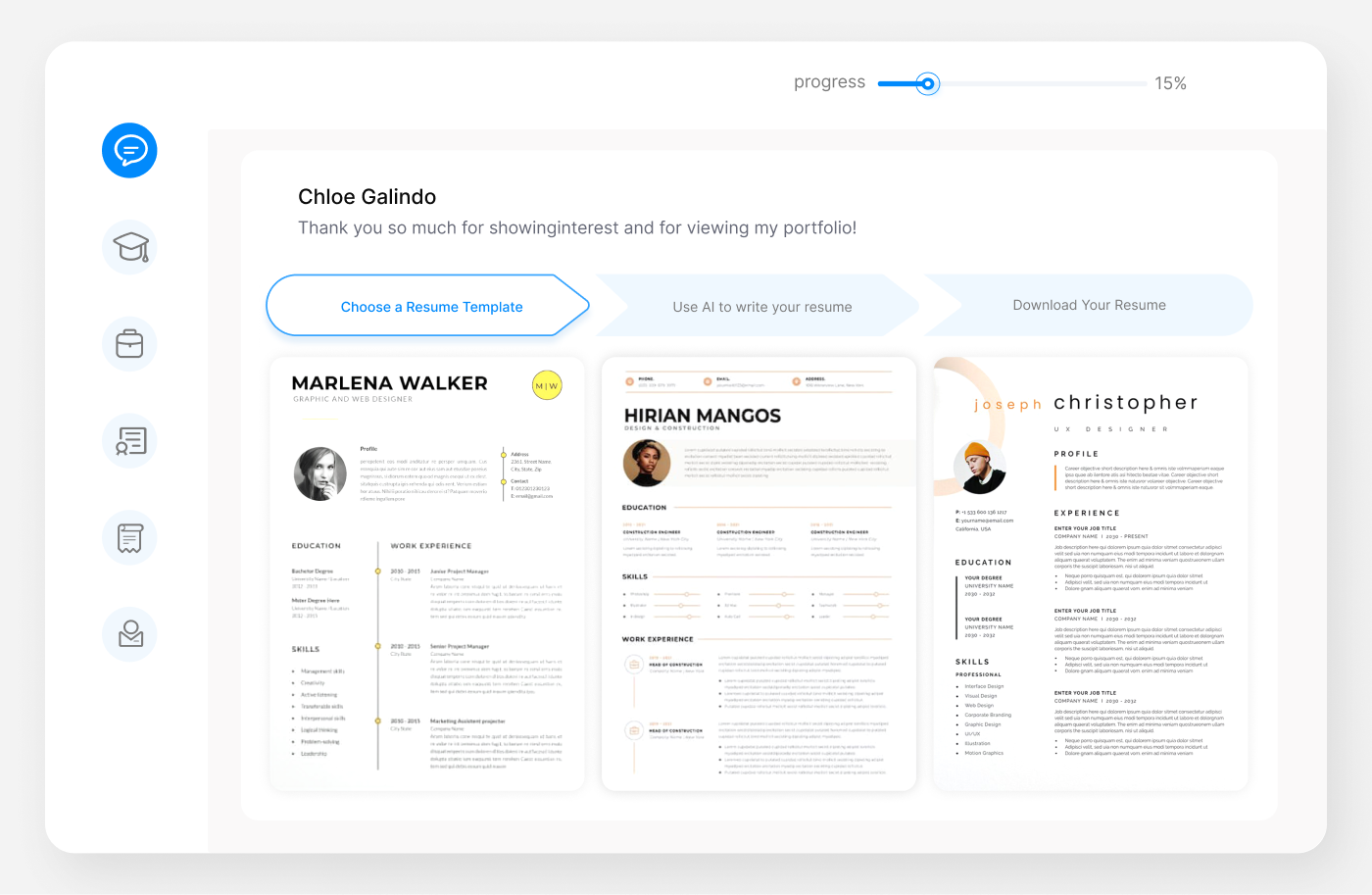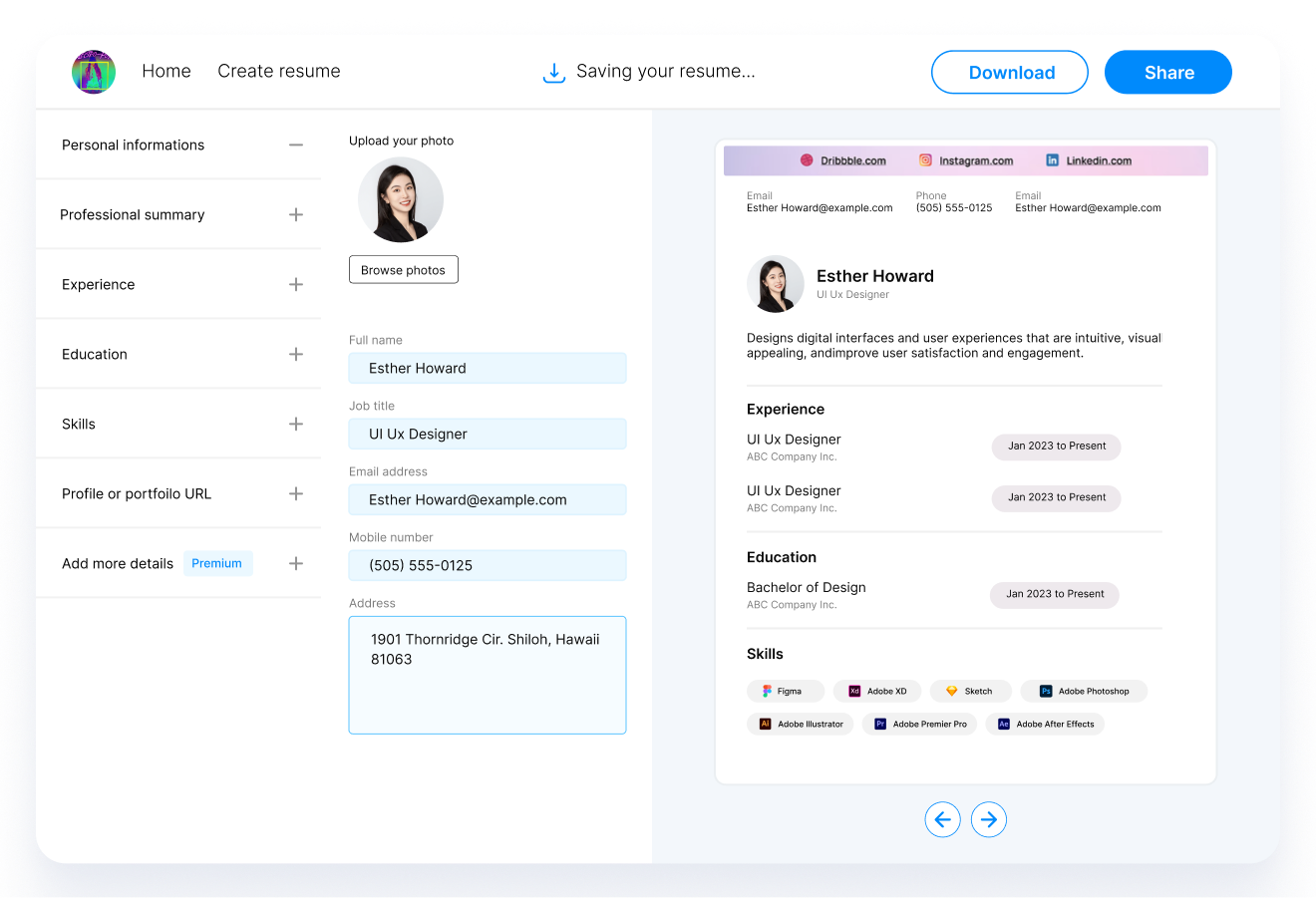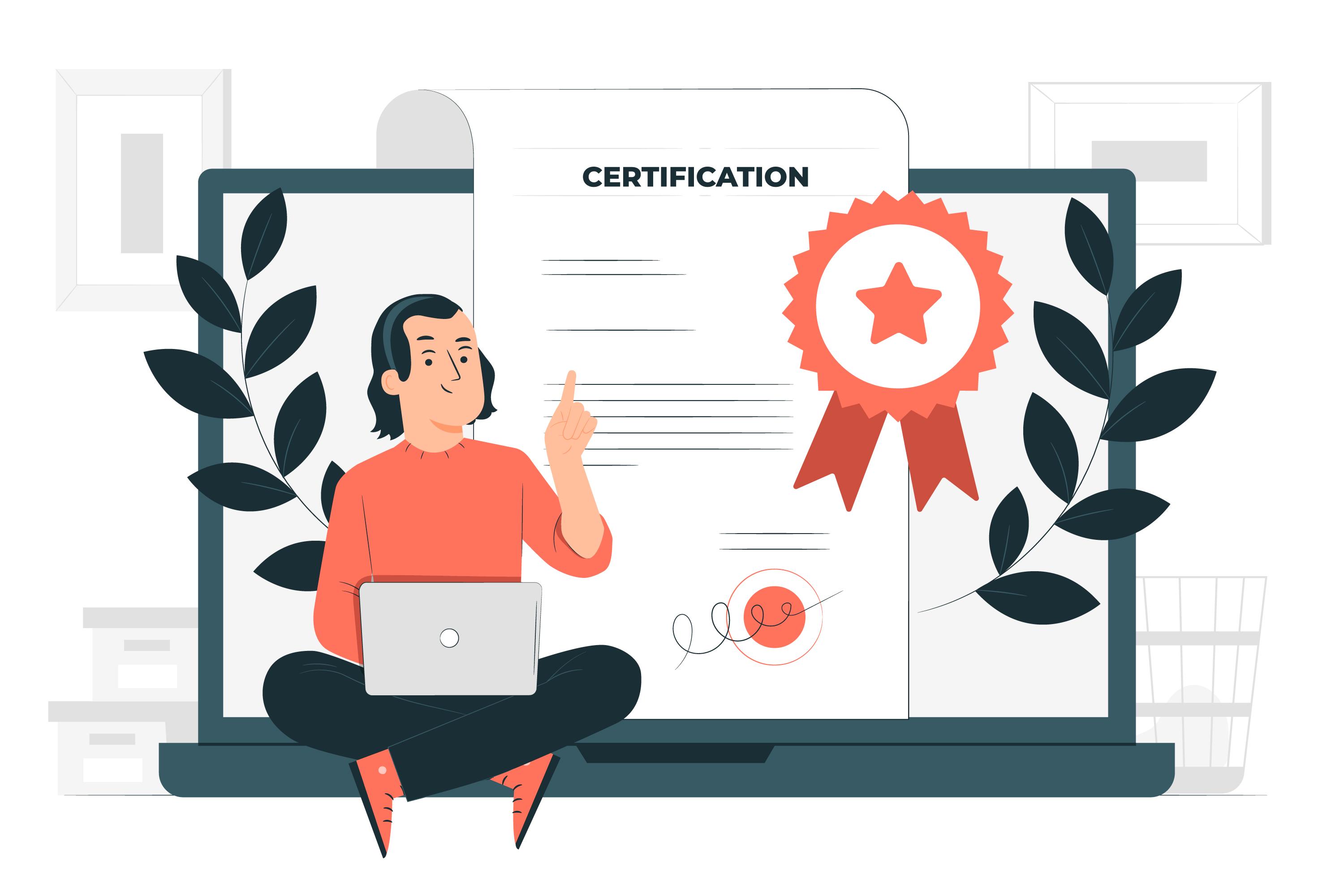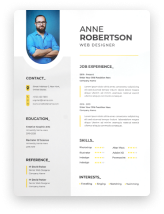In today's fiercely competitive job market, the importance of having a well-crafted resume cannot be overstated. Among the many elements that can make your resume stand out, licenses and certifications hold a special place. They are tangible evidence of your skills and commitment to professional growth. This guide is designed to help you understand and maximize the impact of listing licenses and certifications on your resume, ensuring you present your best self to potential employers in 2024.
As we delve into this guide, we'll explore why these credentials are highly valued by employers and how they can significantly influence your career advancement. Whether you're in a technical field, healthcare, education, or any other industry, the right certifications can be a game-changer. We'll provide you with a comprehensive approach to identify the credentials most relevant to your field, decide which ones to include on your resume, and format them effectively to catch the eye of hiring managers. Our goal is to equip you with the knowledge and tools to make your resume not just a summary of your past but a compelling argument for your future.

Understanding the Value of Licenses and Certifications
In the contemporary job landscape, licenses and certifications are more than just add-ons to your academic qualifications; they are powerful tools that can significantly elevate your professional profile. Let's delve into why employers give weight to these credentials and how they can positively impact your career trajectory.
Why Employers Value These Credentials
-
Expertise Proof: Certifications and licenses act as proof of your expertise and specialized knowledge in a particular domain. They show that you have gone beyond basic education to master specific skills.
-
Commitment to Professional Growth: Obtaining these credentials demonstrates your dedication to continuous learning and professional development, traits highly valued in any industry.
-
Standardization of Skills: Certifications often provide a standardized benchmark of skills and knowledge, ensuring employers that you meet industry-specific standards.
-
Regulatory Compliance: In many industries, certain roles require specific licenses to comply with legal and regulatory standards, making them non-negotiable for certain positions.
Impact on Career Advancement
-
Enhanced Employability: With the right certifications, you become more attractive to potential employers, as you bring verified skills that can contribute immediately to the workplace.
-
Higher Salary Potential: Often, certified professionals enjoy higher salaries as they bring specialized skills that can command a premium in the job market.
-
Networking Opportunities: Certifications can connect you with professional networks, providing opportunities for career advancement and learning.
-
Career Flexibility and Mobility: These credentials can open doors to new career paths, industries, or roles that you may not have been qualified for otherwise.
In essence, licenses and certifications are not just about meeting minimum job requirements; they are about setting yourself apart as a committed, skilled, and adaptable professional.
Before You Start: Self-Assessment
Embarking on the journey of adding licenses and certifications to your resume requires a thoughtful approach. It's not just about listing every credential you've ever earned; it's about strategically showcasing those that align with your career goals and the industry standards. Here's how to conduct a self-assessment before you start:
Identifying Relevant Licenses and Certifications
-
Analyze Job Descriptions: Look at job postings in your desired field. What certifications do they frequently mention? This can give you a clear idea of what employers are looking for.
-
Reflect on Your Career Goals: Consider how certain certifications align with your long-term career objectives. Are you aiming for a leadership role, a technical position, or a career shift?
-
Evaluate Current Trends: Stay informed about the latest trends in your industry. Which certifications are gaining popularity? Which ones are considered essential?
Understanding Your Industry Standards
-
Research Industry Requirements: Different industries have varying standards. For instance, IT certifications like CompTIA or Cisco are highly valued in technology roles, while PMP is a gold standard in project management.
-
Consult with Professionals and Mentors: Talk to people already working in your desired role or industry. They can provide insights into which certifications are most beneficial.
-
Utilize Professional Associations: These organizations often have resources that can guide you in understanding the certifications that carry the most weight in your industry.
By taking the time to carefully evaluate which licenses and certifications are most relevant to your career path, you can ensure that your resume accurately reflects your professional aptitude and ambitions.
Types of Licenses and Certifications
Understanding the various types of licenses and certifications available is crucial in determining which ones to include on your resume. These credentials can be broadly categorized into two groups: Professional and Academic Certifications, and Industry-Specific Licenses. Let's break down each category:
Professional vs. Academic Certifications
-
Professional Certifications: These are typically offered by professional organizations or companies and are geared towards validating the skills and knowledge required in a specific occupation. Examples include Certified Public Accountant (CPA), Project Management Professional (PMP), or Microsoft Certified: Azure Fundamentals.
-
Academic Certifications: These usually come from educational institutions and signify completion of a course of study in a particular field, but not necessarily a full degree program. They can include certifications like a Certificate in Data Science or a Graduate Certificate in Digital Marketing.
Industry-Specific Licenses
-
Healthcare: Licenses in healthcare, such as a Registered Nurse (RN) or Licensed Practical Nurse (LPN), are mandatory for practice in various roles within the medical field.
-
Legal Field: For legal professionals, passing the bar exam and holding a current attorney's license is essential.
-
Construction and Engineering: Certifications like a Professional Engineer (PE) license or a LEED Accredited Professional designation are highly regarded in these fields.
-
Finance and Accounting: The Certified Financial Planner (CFP) or Chartered Financial Analyst (CFA) designations are examples of esteemed certifications in the financial sector.
When choosing which certifications and licenses to include on your resume, consider both the type and the relevance to the job you are applying for. The right mix of professional and academic certifications, coupled with industry-specific licenses, can significantly strengthen your job application.
Deciding What to Include on Your Resume
When it comes to listing licenses and certifications on your resume, it's essential to be selective and strategic. Not all certifications carry the same weight for every job. The key is to focus on relevance and recency. Here's how to decide what to include:
Relevance to the Job
-
Match with Job Requirements: Include certifications that are directly mentioned in the job description or are known to be valued in your target industry.
-
Skills Enhancement: Consider if the certification adds a new skill or enhances existing ones relevant to the job. For example, a digital marketing certification can be crucial for a marketing role.
-
Avoid Overcrowding: Listing too many certifications that are not directly relevant can dilute the impact of the more pertinent ones.
Recency and Validity of Certifications
-
Current Certifications: Always ensure that the certifications listed are current and have not expired. Outdated certifications can mislead employers about your qualifications.
-
Ongoing Relevance: Some certifications might have been relevant at some point in your career but no longer hold the same value. Assess the current market relevance of each certification.
-
Renewal and Updating: If you have certifications that require periodic renewal, make sure they are up-to-date. This shows employers your commitment to maintaining your skills.
Selecting the right certifications to include on your resume is a balancing act. It's about showcasing your most relevant and up-to-date qualifications without overwhelming the reader with unnecessary information.
How to Format Licenses and Certifications on Your Resume
The way you format and present your licenses and certifications on your resume can greatly influence their impact. There are several strategies to consider, whether you opt for a separate section or integrate them within your experience. Here's how to do it effectively:
Separate Section vs. Integrated within Experience
-
Separate Section: This is particularly effective if you have multiple relevant certifications. Create a dedicated section titled 'Licenses & Certifications' where you list them, typically after your education section.
-
Integrated within Experience: If your certifications are highly specific to the roles you've held, consider integrating them into your experience section. This approach highlights how your certifications have directly contributed to your professional achievements.
Chronological vs. Functional Resume Styles
-
Chronological Resume: In this format, list your certifications in reverse chronological order. This is suitable if your most recent certifications are the most relevant to the job.
-
Functional Resume: For a skills-focused resume, group your certifications under relevant skill categories. This approach works well if you're changing industries or have gaps in your employment history.
When formatting this section, include the name of the certification, the awarding body, and the date of completion. If the certification is ongoing or requires renewal, indicate the validity period.
Remember, the goal is to make your certifications easy to find and understand at a glance. A well-organized and clearly formatted section can make a significant difference.
Writing Descriptions for Each Credential
Crafting effective descriptions for each license and certification on your resume is crucial. It's not just about listing them; it's about illustrating their relevance and value. Here's how to articulate this information compellingly:
What Details to Include
-
Name of Certification or License: Clearly state the official name of the credential.
-
Issuing Organization: Include the name of the organization or institution that granted the certification.
-
Date of Achievement: Mention when you received the certification. If it's a recurring certification, include the renewal dates.
-
Relevance to the Position: Briefly describe how this certification is pertinent to the job you're applying for.
-
Special Achievements: If you received any honors or were in the top percentile, include this information to stand out.
How to Make Each Credential Stand Out
-
Use Action Words: Start descriptions with strong action verbs to make them more dynamic and impactful.
-
Quantify Achievements: Where possible, use numbers to quantify the impact of your skills or the level of expertise the certification represents.
-
Link to Professional Experiences: Show how the certification has been applied in your work experience, illustrating practical applications of your learned skills.
-
Keep It Concise: While details are important, ensure that each description is concise and to the point, avoiding overly technical language that might confuse non-specialist recruiters.
Well-crafted descriptions for your licenses and certifications can significantly enhance the perceived value of your credentials. They provide context and demonstrate how your skills have been or can be applied in a professional setting.
Examples of Effectively Listed Certifications
Providing industry-specific examples of how to list certifications effectively can offer valuable insights into crafting a standout resume. Here, we'll showcase examples for various professional levels and industries, illustrating how to present your credentials in the most impactful way.
Industry-Specific Examples
- IT Professional:
-
Certification: Certified Information Systems Security Professional (CISSP)
-
Description: Earned CISSP certification in 2021, demonstrating advanced skills in IT security and risk management. Actively involved in continuous learning to stay ahead of evolving cyber threats.
- Healthcare Worker:
-
Certification: Basic Life Support (BLS) and Advanced Cardiac Life Support (ACLS)
-
Description: Maintained BLS and ACLS certifications, essential for emergency response and patient care in high-stress medical environments.
- Marketing Specialist:
-
Certification: Google Analytics Individual Qualification
-
Description: Obtained Google Analytics certification, enhancing skills in data analysis and digital marketing strategy development.
Varied Professional Levels
- Entry-Level Accountant:
-
Certification: Certified Public Accountant (CPA)
-
Description: Recently achieved CPA status, signifying a strong foundation in accounting principles and compliance standards.
- Mid-Level Project Manager:
-
Certification: Project Management Professional (PMP)
-
Description: PMP certified with over 5 years of project management experience, specializing in agile methodologies and team leadership.
- Senior Engineer:
-
Certification: Professional Engineer (PE) License
-
Description: PE License holder for 10 years, focusing on sustainable design and innovation in civil engineering projects.
These examples demonstrate how to effectively articulate the value of your certifications, tailored to your professional level and industry. Remember, the goal is to show not just what certifications you have, but how they make you an ideal candidate for the position.
Common Mistakes to Avoid
Crafting an effective resume involves not just knowing what to include, but also what pitfalls to avoid. When it comes to listing licenses and certifications, certain common mistakes can detract from your resume's impact. Here's what you should be wary of:
Overloading Your Resume with Irrelevant Information
-
Too Many Certifications: Listing every certification you've ever obtained, regardless of relevance, can overwhelm the reader and dilute the impact of your most pertinent credentials.
-
Irrelevant Credentials: Avoid including certifications that do not enhance your candidacy for the specific role you are applying for.
Formatting and Organizational Errors
-
Disorganized Listing: Certifications listed haphazardly can make it hard for employers to quickly find the information they care about.
-
Inconsistent Formatting: Inconsistency in how you present your certifications (e.g., dates, names of institutions) can make your resume look unprofessional.
-
Typos and Errors: Simple mistakes can give an impression of carelessness. Always proofread your resume.
Avoiding these common errors can make a significant difference in how your resume is perceived by potential employers. A well-organized, relevant, and error-free certifications section can greatly enhance your professional image.
Using Certifications to Overcome Employment Gaps
Employment gaps on your resume can be a source of anxiety during a job search, but certifications can be a strategic tool to address these gaps. Here's how you can use them to your advantage:
-
Show Continuous Learning: Listing certifications obtained during employment gaps demonstrates your commitment to continuous professional development. This can be particularly persuasive to employers, showing that you used your time productively.
-
Bridge Skill Gaps: Certifications can help bridge any skill gaps that may have developed during your time away from the workforce. They show that your skills are up-to-date, which is crucial in rapidly evolving industries.
-
Relevance to Career Goals: Choose certifications that align with your career goals and the roles you are applying for. This shows a focused approach to your career development.
-
Highlight Transferrable Skills: Some certifications can highlight transferrable skills that are applicable across various industries. This can be particularly useful if you're considering a career change.
Using certifications to address employment gaps is an effective way to turn a potential negative into a positive. It shows employers your resilience and dedication to your career.
Digital Badges and Online Certifications
In the digital age, online certifications and digital badges have become increasingly prevalent and recognized in various industries. Here's how you can effectively list them on your resume and ensure their credibility:
How to List Them Effectively
-
Specify the Platform: Mention the platform or institution that issued the certification, especially if it's a well-known and respected provider (e.g., Coursera, Udemy, LinkedIn Learning).
-
Include a URL: If possible, provide a URL or a digital badge link. This allows employers to verify your certification and learn more about the coursework.
-
Brief Description: Give a concise description of what the certification entailed, especially if the title alone doesn't make its relevance clear.
Ensuring Credibility
-
Choose Reputable Providers: Opt for certifications from established, reputable sources. This adds weight to your online credentials.
-
Stay Current: Ensure that your online certifications are current and relevant to your industry. Outdated or irrelevant certifications can detract from your profile.
-
Verify Public Visibility: If your certification comes with a digital badge, ensure it is visible on your public profiles, such as LinkedIn.
Online certifications and digital badges, when listed effectively, can significantly enhance your resume. They demonstrate your initiative in pursuing continuous learning and staying updated with industry trends.
Highlighting Licenses and Certifications in Cover Letters
Incorporating your licenses and certifications into your cover letter is a strategic way to reinforce your qualifications. Here's how to integrate these credentials effectively, making a compelling case for your candidacy.
Integration with Your Personal Story
-
Connect with Your Career Goals: Explain how specific certifications align with your career aspirations and make you a suitable candidate for the role.
-
Narrate Your Learning Journey: Share a brief story or example of how obtaining a particular certification was a milestone in your professional development.
Tailoring to Specific Job Applications
-
Match Job Requirements: Highlight certifications that directly correspond to the skills or qualifications listed in the job description.
-
Showcase Transferable Skills: For certifications that might not seem directly relevant, explain how they equip you with transferable skills beneficial for the role.
-
Demonstrate Commitment to the Field: Use your certifications to show your dedication and ongoing commitment to your professional field.
Your cover letter is an opportunity to add context to the certifications listed on your resume, providing a more comprehensive picture of your professional journey and how it aligns with the job you're applying for.
The Role of ATS in Resume Screening
Understanding the role of Applicant Tracking Systems (ATS) in resume screening is crucial for modern job seekers. ATS are used by employers to filter resumes before they reach human eyes. Here's how to optimize your resume for ATS compatibility, especially regarding your licenses and certifications.
Understanding Applicant Tracking Systems
-
Keywords: ATS often searches for specific keywords related to the job. Ensure that the certifications listed on your resume match the keywords or phrases used in the job description.
-
Standard Titles: Use standard job titles and industry-recognized certification names. Avoid creative or unusual titles that the ATS might not recognize.
Optimizing for ATS Compatibility
-
Simple Formatting: Use a clean, straightforward format. Complex layouts with graphics or tables might confuse the ATS.
-
Include Acronyms and Full Names: For certifications, include both the acronym and the full title (e.g., Certified Public Accountant (CPA)) to cover all bases.
-
Location of Certifications: Place your certifications in a prominent section of your resume. If they are crucial for the job, consider placing them near the top.
By tailoring your resume to be ATS-friendly, you increase the chances of your application moving past the initial screening phase and being seen by a hiring manager.
Updating Your Resume for Career Progression
As your career evolves, so should your resume. Regularly updating your resume, particularly the licenses and certifications section, is key to reflecting your current professional status and goals. Here's how to keep your resume fresh and relevant:
When to Add New Credentials
-
After Earning a New Certification: Add new certifications immediately after you earn them, especially if they are relevant to your current job search or professional development.
-
When Changing Career Paths: If you're transitioning to a new field, include certifications that are pertinent to your new career direction.
How to Remove Outdated Information
-
Irrelevant Certifications: Remove certifications that are no longer relevant to your current professional objectives or the roles you're targeting.
-
Expired Certifications: If you have certifications that have expired and you have not renewed them, it's best to remove them from your resume.
Regular updates ensure that your resume remains an accurate and compelling reflection of your professional journey, showcasing your most relevant and up-to-date qualifications.
Professional Development and Continuing Education
In today's dynamic job market, ongoing learning and professional development are key to maintaining a competitive edge. Here's how to effectively include your continuous learning efforts, like professional development and future certifications, on your resume:
Ongoing Learning in Your Career
-
Highlight Recent Learning: Showcase recent courses, workshops, or seminars you've attended that contribute to your professional growth.
-
Relevant Online Courses: Include any relevant online courses or workshops, especially those from recognized platforms or institutions.
Listing Future Certifications
-
Planned Certifications: If you are currently pursuing a certification, it's acceptable to list it as 'In Progress' with an expected completion date.
-
Career Development Plans: Mentioning future learning plans can demonstrate your commitment to staying updated and growing in your field.
Including continuous learning and future certifications on your resume illustrates your dedication to professional development and keeps your resume current and forward-looking.
International Credentials
Navigating international credentials on your resume can be challenging, especially when applying for jobs in a different country than where your certifications were earned. Here's how to handle foreign certifications effectively:
Dealing with Foreign Certifications
-
Equivalency: If your certification has an equivalent in the country you're applying in, mention this equivalency. For example, if your CPA is recognized as equivalent to a similar qualification in another country, state this clearly.
-
Explanation: Provide a brief explanation if the certification is not well-known in the country you're applying. This helps the employer understand its relevance and value.
Equivalency and Recognition
-
Research: Before applying, research how your international certification is viewed in the local job market. This can guide you on whether to include it and how to present it.
-
Professional Evaluation: In some cases, it might be worthwhile to get a professional evaluation of your foreign certification to establish its equivalency to local credentials.
Properly presenting international credentials can enhance your resume, demonstrating a diverse background and potentially unique skill sets that set you apart from other candidates.
Networking and Professional Associations
Incorporating your involvement in networking and professional associations into your resume can significantly enhance your credentials. Here's how to leverage your certifications and memberships to strengthen your professional profile:
Leveraging Certifications for Networking
-
Professional Groups and Events: Mention your active participation in groups or events related to your certifications. This demonstrates your engagement with the professional community.
-
Networking Opportunities: Highlight how your certifications have allowed you to network with industry leaders and peers, expanding your professional circle.
Involvement in Professional Groups
-
Leadership Roles: If you hold or have held a leadership position in a professional association, include this on your resume. It shows leadership skills and a deep commitment to your field.
-
Active Membership: Even regular membership can be beneficial to list, especially if the association is well-regarded in your industry.
Being involved in professional associations and leveraging your certifications for networking are powerful ways to show potential employers that you are engaged and invested in your industry.

FAQs: Licenses & Certifications on Resume
Addressing frequently asked questions about listing licenses and certifications on a resume can provide clarity and guidance for job seekers. Here are some common inquiries and their answers:
Q: Should I include expired certifications?
Answer: Generally, it's best not to include expired certifications unless they demonstrate a past skill or knowledge base that's still relevant. If including, make sure to note that they are expired.
Q: How can I verify the credibility of my certifications?
Answer: You can verify the credibility of your certifications by providing the issuing authority's name and, if possible, a link to the certification or the authority's website.
Q: Can I include certifications in progress?
Answer: Yes, you can include certifications that you are currently pursuing. List them as 'In Progress' with an anticipated completion date.
Q: How many certifications are too many for a resume?
Answer: There's no set number, but it's important to only include certifications that are relevant to the job you're applying for. Overloading your resume with unnecessary certifications can dilute its impact.
Providing clear and concise answers to these FAQs can help job seekers make informed decisions about how to effectively include licenses and certifications in their resumes.
Conclusion
In summary, the strategic inclusion of licenses and certifications on your resume can significantly enhance your job application, making you a more attractive candidate in the eyes of potential employers. This guide has equipped you with the knowledge to assess, select, and effectively present your credentials in alignment with your career goals and the demands of the 2024 job market.
Remember, your resume is a dynamic document that should evolve as you progress in your career. Regularly updating it to include relevant certifications, coupled with a clear understanding of how to optimize it for Applicant Tracking Systems, will ensure that your professional narrative remains compelling and relevant.
Embrace continuous learning and professional development as integral parts of your career journey. The right certifications can open doors to new opportunities, helping you achieve your professional aspirations.
We encourage you to approach your career development with confidence, knowing that each certification you earn is not just a line on a resume, but a testament to your commitment to excellence in your profession.
Recap of Key Points
-
Understand the value and relevance of your certifications.
-
Tailor your resume and cover letter to reflect these credentials appropriately.
-
Stay informed about industry trends and continuously update your skills.
Encouragement for Continuous Learning and Development
Never stop learning and growing. The landscape of employment and professional development is constantly evolving, and staying ahead means being proactive about your learning and career development. Keep seeking out opportunities to enhance your skills and qualifications, and let your resume reflect your commitment to professional excellence.
Recommended Reading






